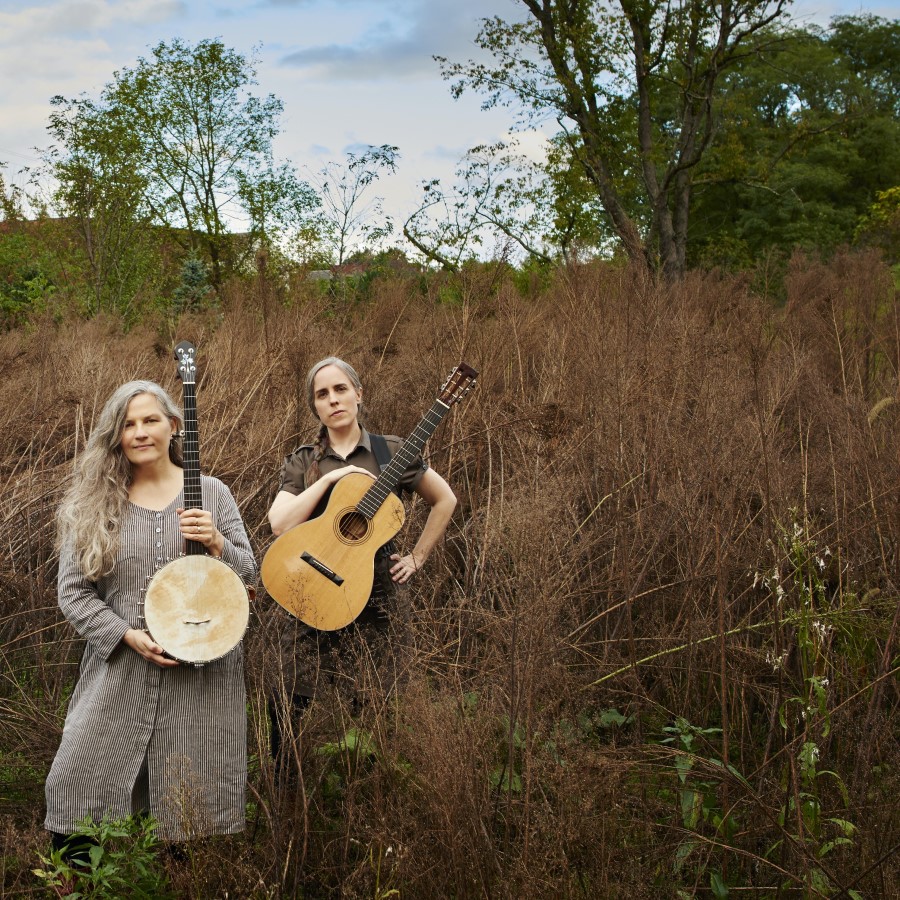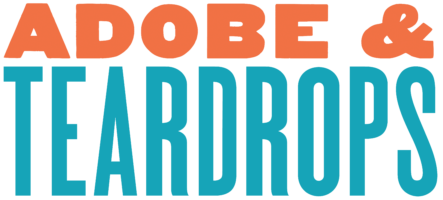Pittsburgh-based duo The Early Mays will release their forthcoming EP, Prettiest Blue, on July 1, 2022. Composed of artists Emily Pinkerton and Ellen Gozion, the pair sing Appalachian-inspired songs over a lush accompaniment of fiddle, banjo, guitar, and harmonium. Somewhere on the border between old-time music and modern American songwriting, The Early Mays have built a band with harmonies that feel like home. It’s a partnership that has shared slow-burning, perfectly paired vocals for ten years—from NPR’s Mountain Stage to house concerts all over the mid-Atlantic.

For Prettiest Blue, they were looking for a pared-down “in the room” sound, and recorded at Audible Images in Pittsburgh with Hollis Greathouse, combining live takes with multi-tracked vocals and cello. Drawn by Alex Perialas’ work on Richie Stearns and Rosie Newton’s latest release, The Early Mays decided to mix at Pyramid Sound Studios in Ithaca, NY. Cellist Nicole Myers joins the Mays on Prettiest Blue, lending sweeping melodic lines to support the vocals and old-time textures.
The Early Mays have spent most of their professional lives as musicians. Gozion is a pianist for the Pittsburgh Ballet Theatre and a Music Director at First Unitarian Church of Pittsburgh. In the world of old-time, she has made a name for herself as a ballad singer. This trajectory comes across on Prettiest Blue in the newly-composed “Ballad of Johnny Fall,” a dark tale of a man whose eyes were “once the prettiest blue.”
Pinkerton has lived a bit of a double life in music, dedicating two decades to Chilean folk song, including three years overseas and several collaborations with South American artists: “Even when I’m writing with my banjo, traditional singing from Chile creeps into my rhythm and rhyme. You can hear hints of this in ‘On a Dying Day’ where the lyrics roll back and forth like waves,” she explains.
The duo’s newest release, “On a Dying Day,” is haunting and achingly beautiful. The shimmering banjo mimics the lapping waves of Lake Michigan, while an inexorably swelling cello buttresses the narrator’s resolve. Whether that resolve leads to anything, though, is a secret the waves do not tell us as the song recedes into the distance.
Does your album have an overarching theme?
Prettiest Blue is about moving through sorrow and believing in something brighter and better.
We didn’t notice until after we’d gathered the songs together but “blue”-ness is in almost all the tracks… Johnny Fall’s eyes “were once the prettiest blue,” Emily’s “On a Dying Day” is set by the blue waters of Lake Michigan, “Shakin’ Down the Acorns” has a modal, blue sound to it, the Carter Family track says “bury me under the violets blue,” and the last track is “My Home’s Across the Blue Ridge Mountains.” There’s a yearning and reaching in every track… a search for beauty in the midst of sorrow: the Prettiest Blue.
What are some of the best venues you’ve played? Why?
We always search for beautiful spaces when gigging— “beautiful” in the physical, acoustic or human sense! We like to play halls, churches or galleries—physical spaces that already put an interesting “mix” our instruments and voices, and then we find a way to boost that natural acoustic sound with light amplification on large diaphragm condenser mics. We also adore house concerts where we can play fully unplugged. The beauty of these spaces is the closeness to the audience.
One of the warmest, kindest programs we’ve played is NPR’s Mountain Stage with Larry Groce. It felt like every last person on the production team had their heart in the work. Everyone was there to make the best sounding show possible, and it really puts you at ease. We’ll be back on Mountain Stage in late August and are so excited.
Is there a professional “bucket list” item that you would love to check off?
It would be an absolute dream if one of our musical idols would cover an Early Mays song one day! Emmylou Harris, Lucinda Williams, Allison Krauss, Judy Collins.
Do you have any songwriting tips?
There are so many ways to start a song and so many fun ways to access the creative corners of your mind. I like to try everything, but there is one process that seems to help me the most.
I imagine one of my very favorite songs—something like Bob Dylan’s “Girl from the North Country”—that makes me freeze in my tracks because of how much I love it. I think about it (without playing it or listening to it), and then I start searching on my guitar for something that puts my heart in that same state. It’s a nice way to gather an emotional energy and become a magnet for musical and lyrical ideas that match. I feel less like I’m searching, and more like I’m gently calling a new song closer to me. — Emily
What album would you make your kid listen to and why?
My son, who is 8, is already a voracious listener to all my very favorites (although I should probably put a little more old-time on his playlists)! Our house is a bit of a time capsule, with tons of Prince, REM and folx from the 80s and 90s that send me and my husband straight back to childhood. More than anything, I want him to love a big variety of sounds and musicians. I want him to know the history that is held in all of their voices. — Emily
